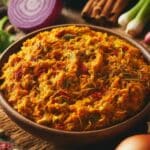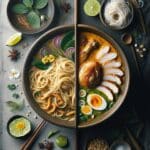The Global Fusion Revolution: Khao Soi Gai’s Journey to Western Menus
Table of Contents
ToggleKey Takeaways
| Aspect | Impact |
|---|---|
| Culinary Fusion | Khao Soi Gai inspires creative Western adaptations |
| Cultural Exchange | Introduces Thai flavors to new audiences |
| Menu Diversity | Enhances Western restaurant offerings |
| Ingredient Adaptation | Local substitutions maintain dish essence |
| Chef Innovation | Sparks new interpretations of classic Thai cuisine |
Introduction: The Thai Sensation Taking the West by Storm
Khao Soi Gai, the beloved Northern Thai curry noodle dish, is making waves across Western kitchens.
This culinary gem, once a hidden treasure of Chiang Mai, now graces menus from New York to London. But how did this happen?
Let’s dive into the fascinating world of culinary fusion and discover how Western chefs embrace and reimagine this iconic Thai dish.
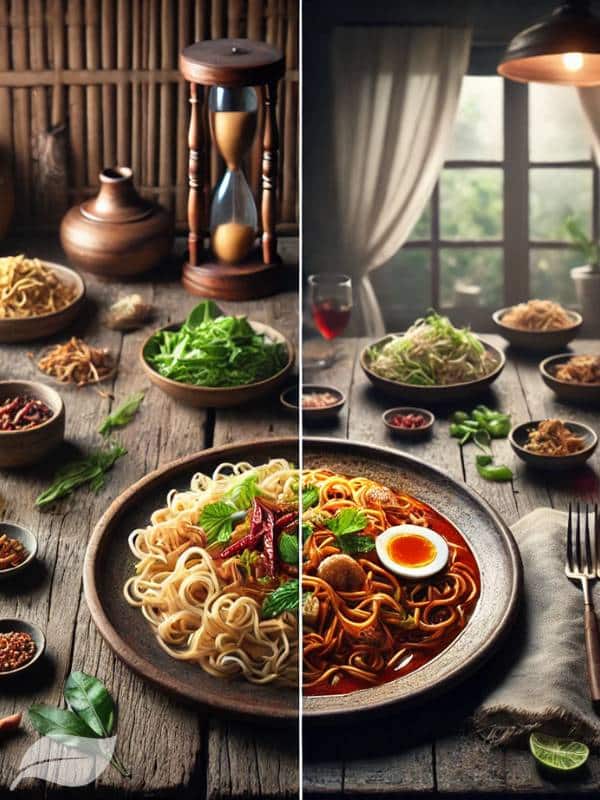
The Essence of Khao Soi Gai: A Brief Overview
Before we explore its Western journey, let’s understand what Khao Soi Gai truly is. This aromatic dish features:
- Rich coconut curry broth
- Tender chicken
- Both soft and crispy egg noodles
- A medley of essential toppings
Its cultural significance in Northern Thailand cannot be overstated. It’s more than food; it’s a culinary icon representing Thai identity and regional tradition.
Western Chefs' Perception: A New Culinary Canvas
How do chefs outside Thailand view Khao Soi Gai? Many see it as:
- A gateway to Thai flavors
- A versatile base for fusion experiments
- An opportunity to showcase culinary creativity
Western chefs are intrigued by the complex flavor profile and the potential for adaptation. They recognize its appeal to adventurous diners seeking authentic yet accessible global cuisines.
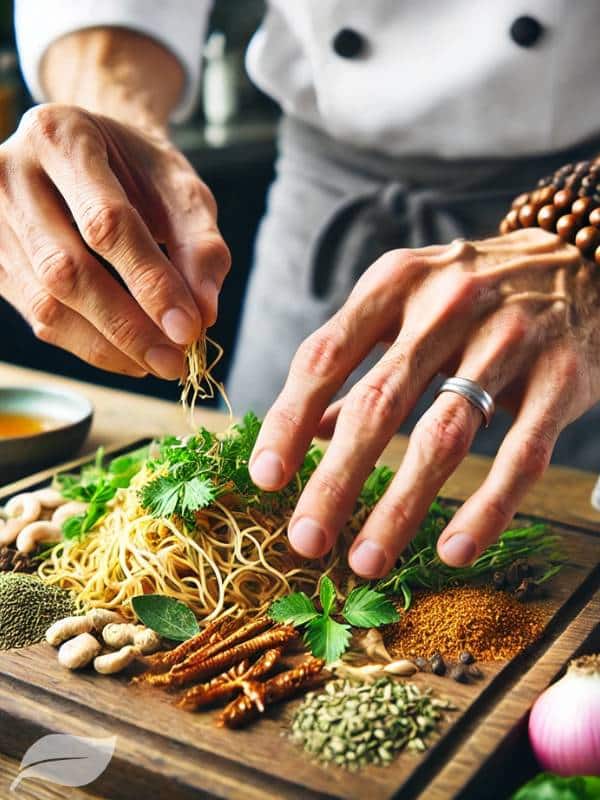
Adaptation Techniques: Bridging Culinary Gaps
Ingredient Substitutions
Chefs often face challenges sourcing authentic Thai ingredients. Here’s how they adapt:
- Using local chilies instead of Thai varieties
- Substituting lime leaves with lemon zest
- Experimenting with regional noodle types
Fusion Approaches
Western chefs are getting creative! Some popular fusion techniques include:
- Adding non-traditional proteins (e.g., duck or seafood)
- Incorporating local vegetables
- Experimenting with texture (e.g., molecular gastronomy foams)
These adaptations maintain the essence of Khao Soi Gai while making it more approachable for Western palates.
Menu Integration: From Street Food to Fine Dining
Khao Soi Gai’s representation in Thai restaurants worldwide has evolved. It’s no longer confined to ethnic eateries. We’re seeing it pop up in:
- Upscale fusion restaurants
- Trendy food trucks
- Even on tasting menus at Michelin-starred establishments!
This versatility showcases the dish’s ability to transcend cultural boundaries and appeal to diverse audiences.
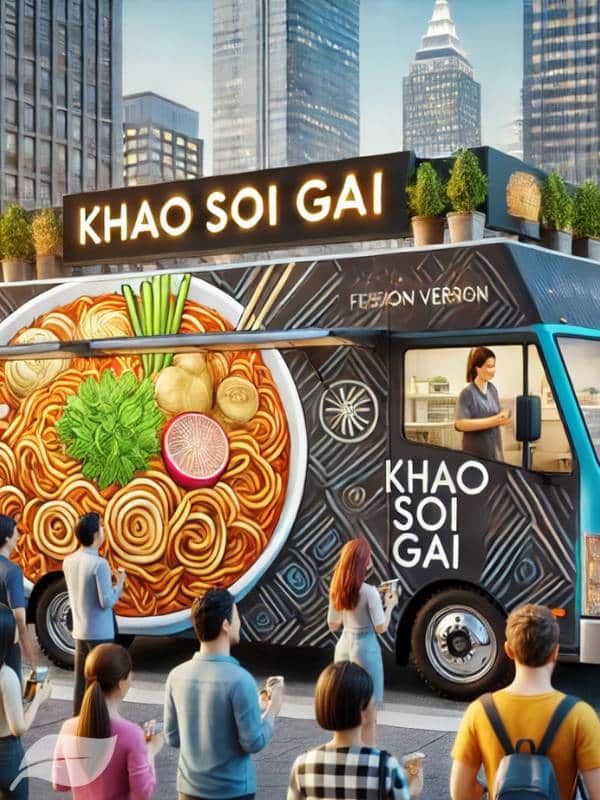
Difficulty Level
The Impact on Local Economies and Agriculture
The rising popularity of Khao Soi Gai in the West isn’t just a culinary phenomenon. It’s having a ripple effect:
- Boosting demand for Thai ingredients
- Creating new economic opportunities for Thai exporters
- Inspiring culinary tourism in Thailand
This global interest is reshaping local agricultural practices and contributing to cultural exchange.
Health Considerations and Western Adaptations
As health-conscious dining gains traction, chefs are exploring ways to make Khao Soi Gai fit into modern dietary preferences:
- Offering vegetarian and vegan versions
- Using lean proteins or plant-based alternatives
- Incorporating whole-grain noodles
These adaptations address common misconceptions about Khao Soi Gai and highlight its potential as a nutritious meal option.
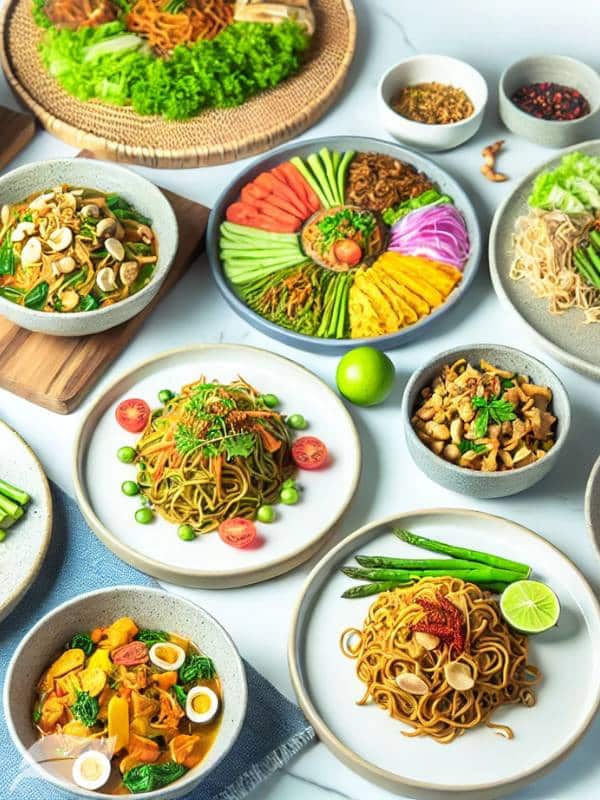
Learning and Mastery: Western Chefs Embracing Thai Cuisine
Incorporating Khao Soi Gai into Western menus has sparked a broader interest in Thai cuisine. We’re seeing:
- Chefs traveling to Thailand for authentic experiences
- Cooking schools specializing in Khao Soi Gai popping up in Western cities
- Collaborations between Thai and Western chefs
This cultural exchange fosters a deeper appreciation for Thai culinary traditions and techniques.
Conclusion
The Future of Khao Soi Gai in Western Cuisine
As we look ahead, the future of Khao Soi Gai in Western kitchens seems bright:
- Continued fusion experiments
- Seasonal adaptations inspired by Thai variations
- Integration into fast-casual dining concepts
The dish’s journey reflects the evolution of the Thai culinary scene and its growing global influence.
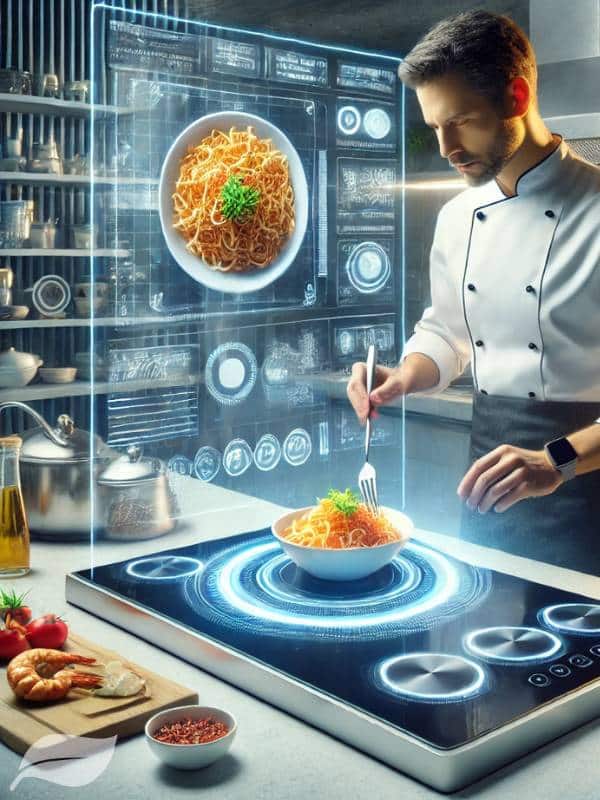
Conclusion: A Culinary Bridge Between East and West
Incorporating Khao Soi Gai into Western menus is more than a food trend.
It’s a delicious example of cultural fusion, culinary creativity, and global gastronomy.
As this Thai treasure continues to captivate Western palates, it builds bridges between cultures, one bowl at a time.
Whether you’re a chef looking to expand your menu or a food enthusiast eager to explore global flavors, Khao Soi Gai offers a world of possibilities.
Why not try making your own fusion version at home? Check out our classic Khao Soi Gai recipe for inspiration and start your own culinary adventure!

